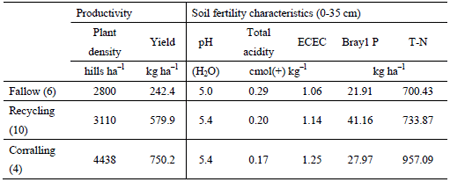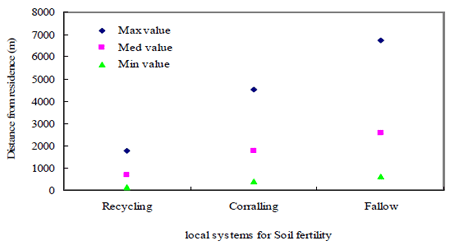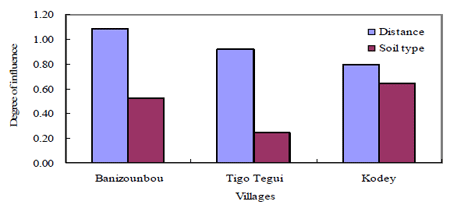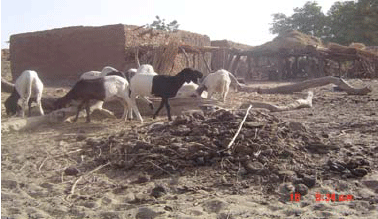Actual situation of local soil fertility management on agricultural land in the Sahel, West Africa
Description
The consistently low level of agricultural production in the Sahel zone of West Africa, especially in Niger, due to poor soil characteristics has hampered sustainable development in this region. It is important to make use of local farmers’ knowledge through a better understanding of its context in order to mitigate existing problems that are impeding sustainable technology development. This is the basic and essential approach for a new technology to be more acceptable and sustainable at local farmers’ level.
The agricultural lands in the study site are managed in two ways: intensively and extensively. Recycling (use of household waste and livestock excrement) and corralling (application of livestock excrement through the tethering of sheep, goats or cows in the fields in the evening) are systems categorized as intensive management, while fallow is a system practiced under extensive management. Based on a field survey of 2,430 ha, fallow is clearly the major system at the study site, since it accounted for 66% of surveyed fields. The corralling and recycling system account for the remaining 18% and 16%, respectively. Despite their large area, fields under the fallow system have the poorest soil fertility level of all due to the combination of longer cultivation periods (6 years on average) and shorter period of restoration (3 years). This impedes the production of millet, as shown in the results (Table 1). Local farmers adopt a recycling system (transporting household waste and/or animal dung) during the dry season, which lasts from late October to May. Since transport of waste using either animal carts or buckets carried on the head is time-consuming, this system is usually limited to fields adjacent to the village. On the other hand, corralling is done some distance from the village, since the pastoralists who use this system move to where they have better access to water for their livestock: areas which tend to be distant from the village. Consequently, fields located far from the village are managed using the fallow system. This phenomenon was confirmed quantitatively by a study of the distribution pattern of a field under different management systems (Fig. 1). Through factor analysis, the distance of a field from the village proved to be a more important factor than soil type for local farmers when managing soil fertility on their land (Fig. 2).
Figure, table
-
Table 1. Productivity of millet and soil fertility characteristics of local fertility management systems.
-
Fig. 1. Traits of local systems on soil fertility management with distance. -
Fig. 2. Factors in the decision-making of local farmers on soil fertility management in the study area. -
Photo 1. A compost heap in a compound of a village.
This is the source for the recycling system and local farmers transport it once every few days.
- Affiliation
-
Japan International Research Center for Agricultural Sciences Crop Production and Environment Division
- Classification
-
Technical A
- Term of research
-
FY2003-2005
- Responsible researcher
-
HAYASHI Keiichi ( Crop Production and Environment Division )
SHINJO Hitoshi ( Kyoto University )
TANAKA Ueru ( Kyoto University )
KAKEN Researcher No.: 10231408ABDOULAYE Tahirou ( Institut National de Recherche Agronomique du Niger )
MATSUNAGA Ryoichi ( Crop Production and Environment Division )
- ほか
- Publication, etc.
-
Hayashi, K. (2005) Japan Association for International Collaboration of Agriculture and Forestry Expert bulletin 25(6):12-26
Hayashi K, Gerard B, Hiernaux P. 2004. Rational organic matter management for mitigating soil degradation in Semi-arid of West Africa. Proceedings for the 4th International conference on land degradation, September 2004, Murcia, Spain, ISBN84-95781-42-5: 5-11
- Japanese PDF
-
2005_seikajouhou_A4_ja_Part9.pdf445.11 KB




